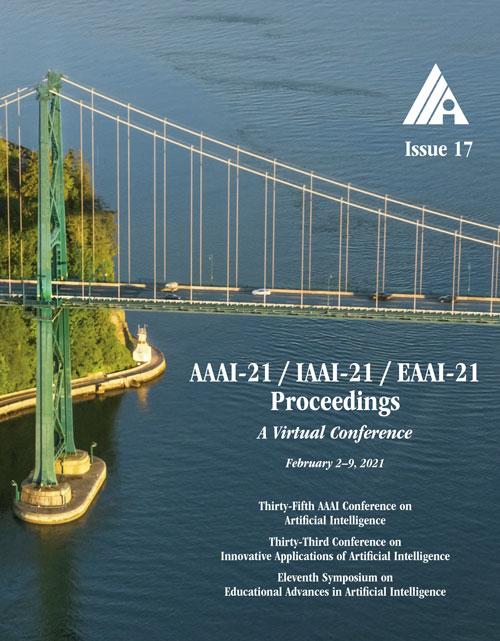Identification of Abnormal States in Videos of Ants Undergoing Social Phase Change
DOI:
https://doi.org/10.1609/aaai.v35i17.17794Keywords:
Deep Learning For Biology, Collective Behavior Recognition, Social InsectAbstract
Biology is both an important application area and a source of motivation for development of advanced machine learning techniques. Although much attention has been paid to large and complex data sets resulting from high-throughput sequencing, advances in high-quality video recording technology have begun to generate similarly rich data sets requiring sophisticated techniques from both computer vision and time-series analysis. Moreover, just as studying gene expression patterns in one organism can reveal general principles that apply to other organisms, the study of complex social interactions in an experimentally tractable model system, such as a laboratory ant colony, can provide general principles about the dynamics of other social groups. Here, we focus on one such example from the study of reproductive regulation in small laboratory colonies of more than 50 Harpegnathos ants. These ants can be artificially induced to begin a ~20 day process of hierarchy reformation. Although the conclusion of this process is conspicuous to a human observer, it remains unclear which behaviors during the transient period are contributing to the process. To address this issue, we explore the potential application of One-class Classification (OC) to the detection of abnormal states in ant colonies for which behavioral data is only available for the normal societal conditions during training. Specifically, we build upon the Deep Support Vector Data Description (DSVDD) and introduce the Inner-Outlier Generator (IO-GEN) that synthesizes fake “inner outlier” observations during training that are near the center of the DSVDD data description.We show that IO-GEN increases the reliability of the final OC classifier relative to other DSVDD baselines. This method can be used to screen video frames for which additional human observation is needed. Although we focus on an application with laboratory colonies of social insects, this approach may be applied to video data from other social systems to either better understand the causal factors behind social phase transitions or even to predict the onset of future transitions.Downloads
Published
2021-05-18
How to Cite
Choi, T., Pyenson, B., Liebig, J., & Pavlic, T. P. (2021). Identification of Abnormal States in Videos of Ants Undergoing Social Phase Change. Proceedings of the AAAI Conference on Artificial Intelligence, 35(17), 15286-15292. https://doi.org/10.1609/aaai.v35i17.17794
Issue
Section
IAAI Technical Track on Emerging Applications of AI

